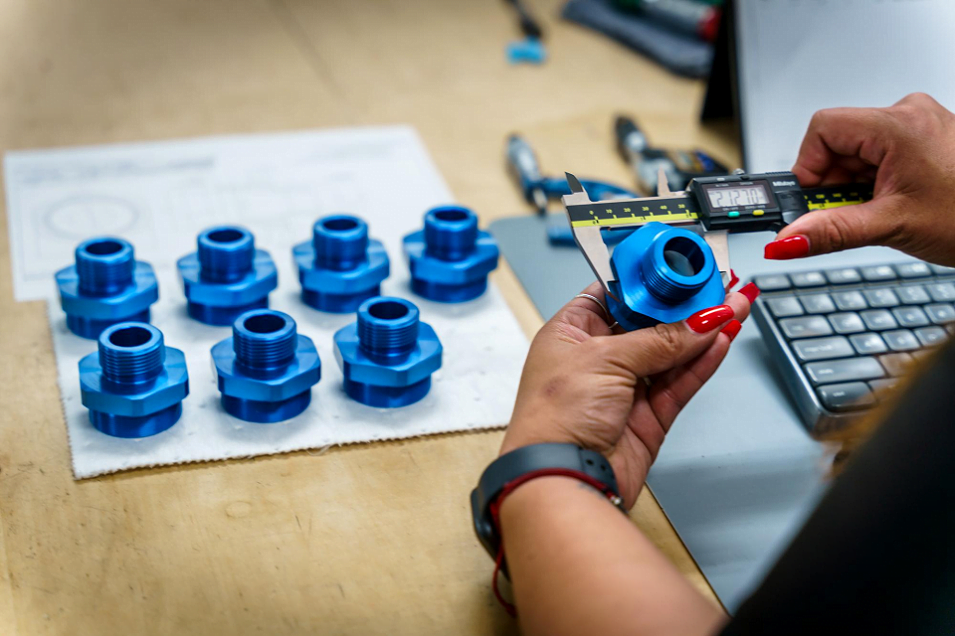Methods of Metal Casting Inspection – Why it is Important

Metal casting inspection plays a vital role in the manufacturing industry by transforming raw materials into precise and intricate shapes. However, ensuring the quality and integrity of these castings is paramount. At Sneh Metal Alloys, we understand that the success of our products hinges on rigorous inspection methods. Here’s a deep dive into the methods of metal casting inspection and why they are indispensable for our operations.
Why Is Metal Casting Inspection Crucial?
Ensuring Product Quality:
The main objective of metal casting inspection is to guarantee that the final product aligns with the prescribed quality standards. Defects in castings can lead to product failure, which is unacceptable in industries like aerospace, automotive, and medical devices, where precision and reliability are paramount.
Enhancing Safety:
Defective metal castings can pose significant safety risks, leading to catastrophic failures in critical applications. By employing thorough inspection methods, we at Sneh Metal Alloys can identify and rectify potential issues before the product reaches the market, ensuring safety and reliability.
Cost Efficiency:
Detecting defects early in the manufacturing process helps in minimizing costs associated with rework, scrap, and warranty claims. Effective inspection methods contribute to the efficient use of materials and resources, thereby enhancing overall cost efficiency.
Maintaining Reputation:
Maintaining our dedication to delivering high-quality products strengthens our reputation within the market. By employing state-of-the-art inspection techniques, Sneh Metal Alloys ensures that we consistently deliver superior products, thereby fostering trust and loyalty among our customers.
Methods of Metal Casting Inspection
Visual inspection:
Visual Inspection stands as the fundamental yet indispensable method in metal casting inspection. Trained inspectors examine the castings for visible defects such as cracks, surface porosity, and misalignment. While it may seem straightforward, visual inspection requires a keen eye and experience to detect subtle issues that could impact the product’s performance.
Radiographic Testing (X-Ray Inspection):
Radiographic testing uses X-rays to penetrate the casting and produce an image of its internal structure. This method is highly effective in detecting internal defects such as voids, inclusions, and cracks that are not visible on the surface. X-ray inspection is particularly valuable for high-integrity applications where internal soundness is critical.
Ultrasonic Testing:
Ultrasonic testing entails transmitting high-frequency sound waves into the casting and examining the reflected signals to pinpoint internal defects. This method excels in detecting flaws like internal cracks, voids, and inclusions. Ultrasonic testing is advantageous because it is non-destructive and provides precise, real-time results.
Magnetic Particle Inspection:
Magnetic particle inspection is employed to detect surface and near-surface defects in ferromagnetic materials. The process involves magnetizing the casting and applying ferrous particles to its surface. The particles gather at areas with magnetic flux leakage, highlighting defects such as cracks and voids. This method is efficient and highly sensitive to surface imperfections.
Dye Penetrant Inspection:
Dye penetrant inspection, widely utilized in various industries, is pivotal for identifying surface-breaking defects in non-porous materials. The process involves applying a dye to the surface of the casting, allowing it to seep into any cracks or flaws. Following a designated period, the surplus dye is eliminated, and a developer is applied to render the defects visible. This method is straightforward, cost-effective, and adaptable to a wide range of materials.
Computed Tomography (CT) Scanning:
CT scanning is an advanced inspection method that provides a detailed 3D image of the casting’s internal structure. This technique is similar to medical CT scans but is adapted for industrial use. CT scanning is highly effective in detecting complex internal defects and is invaluable for quality control in high-precision applications.
Conclusion
At Sneh Metal Alloys, we recognize that the quality of our metal castings is paramount to our success and our clients’ satisfaction. By employing a combination of traditional and advanced inspection methods, we ensure that our castings meet the highest standards of quality, safety, and reliability.
Our commitment to rigorous inspection processes not only enhances product quality but also reinforces our reputation as a trusted supplier in the metal casting industry. Investing in state-of-the-art inspection techniques underscores our dedication to excellence and continuous improvement, ensuring that Sneh Metal Alloys remains at the forefront of innovation and quality in metal casting.

